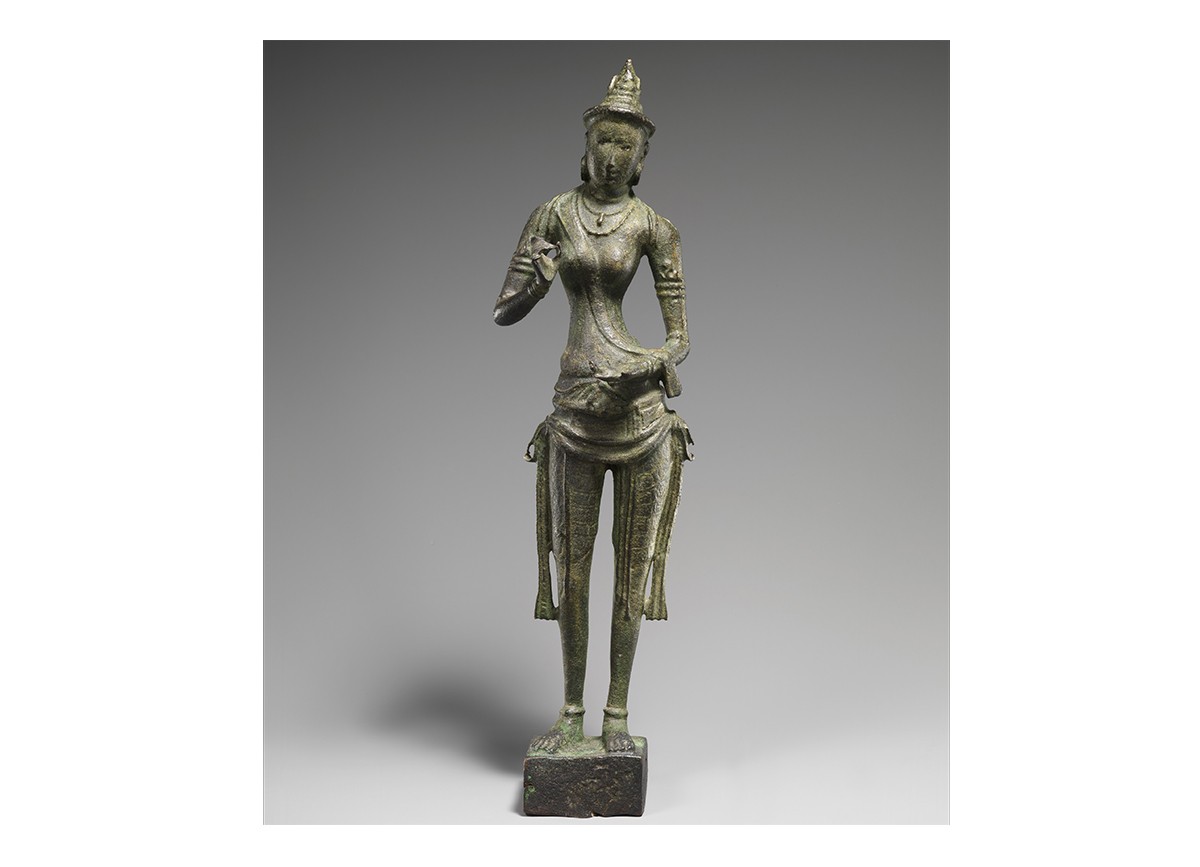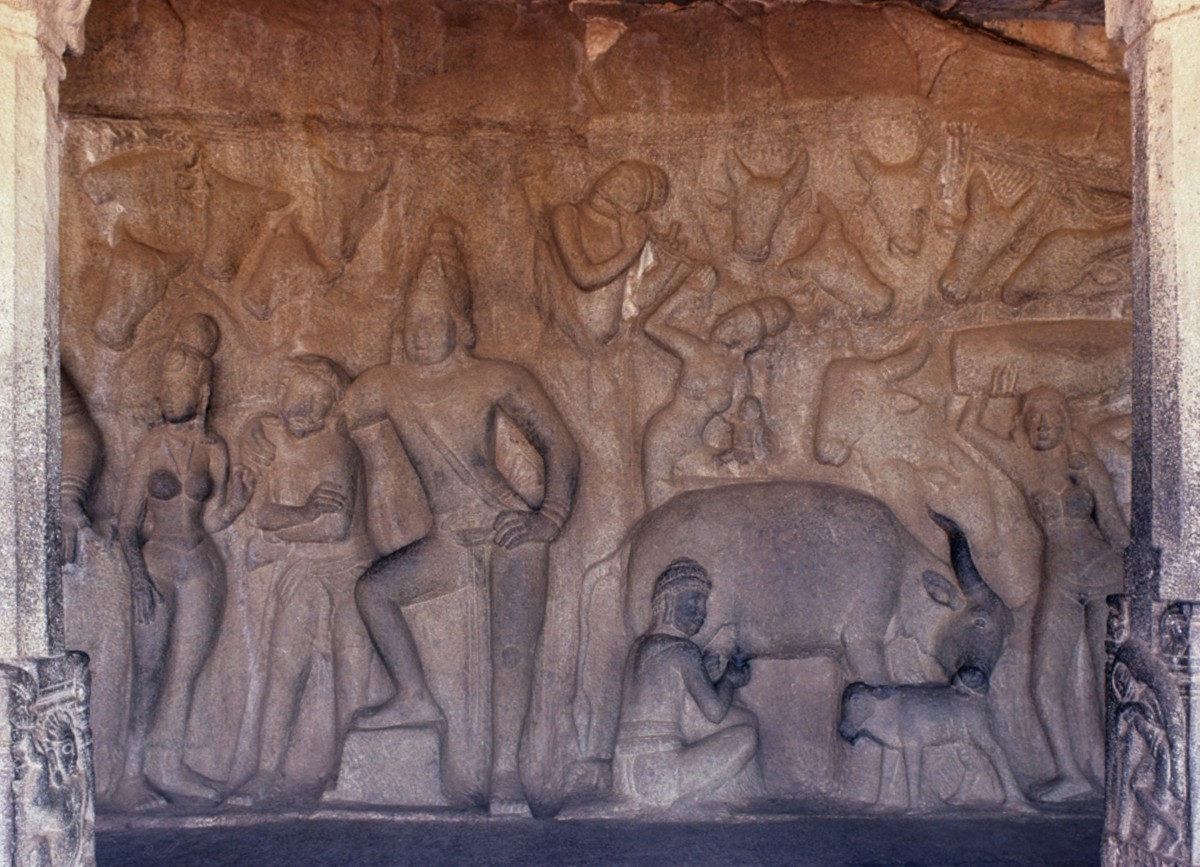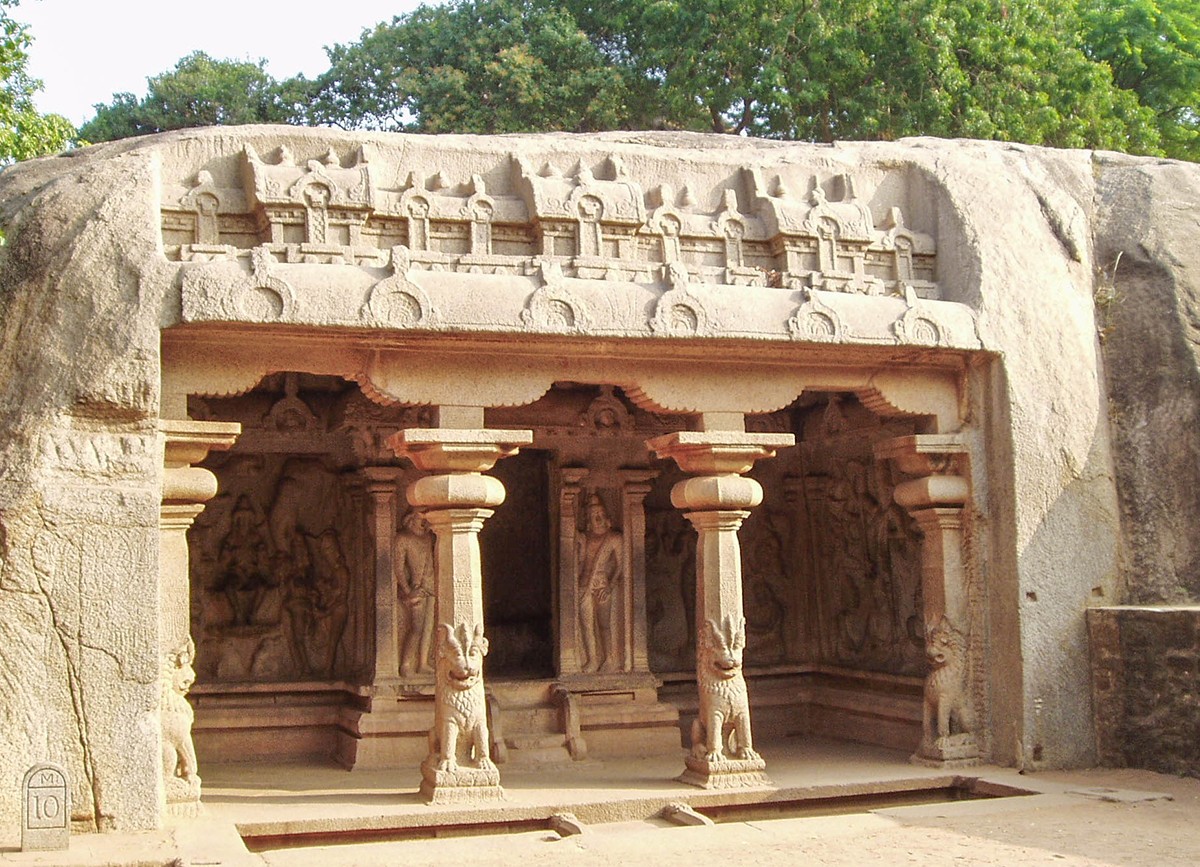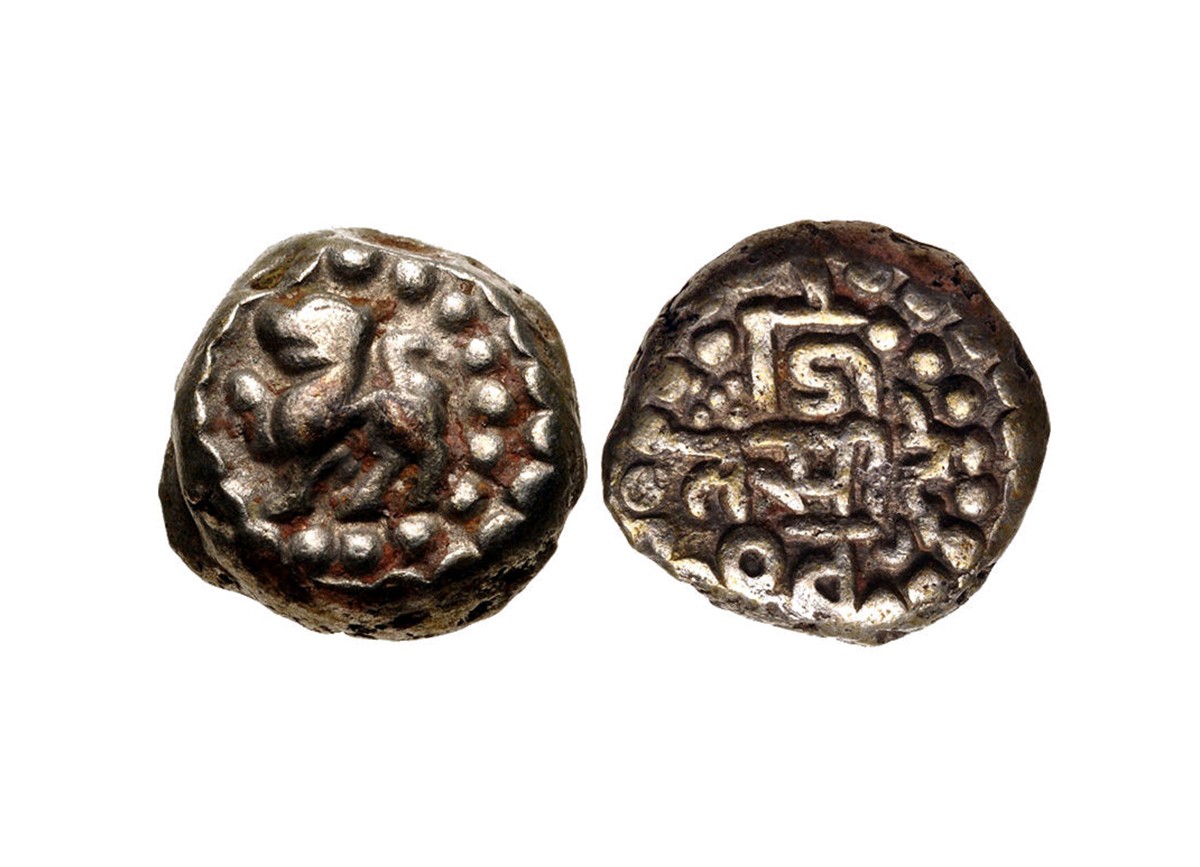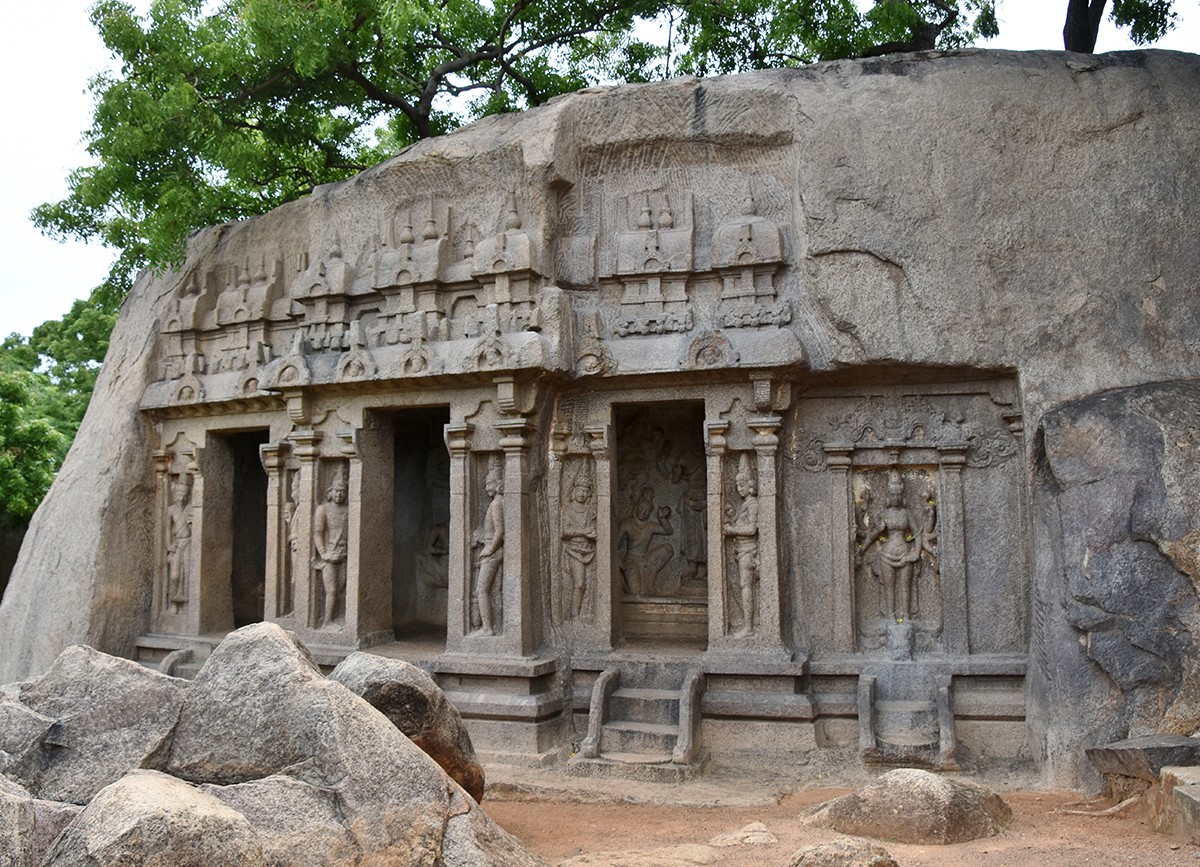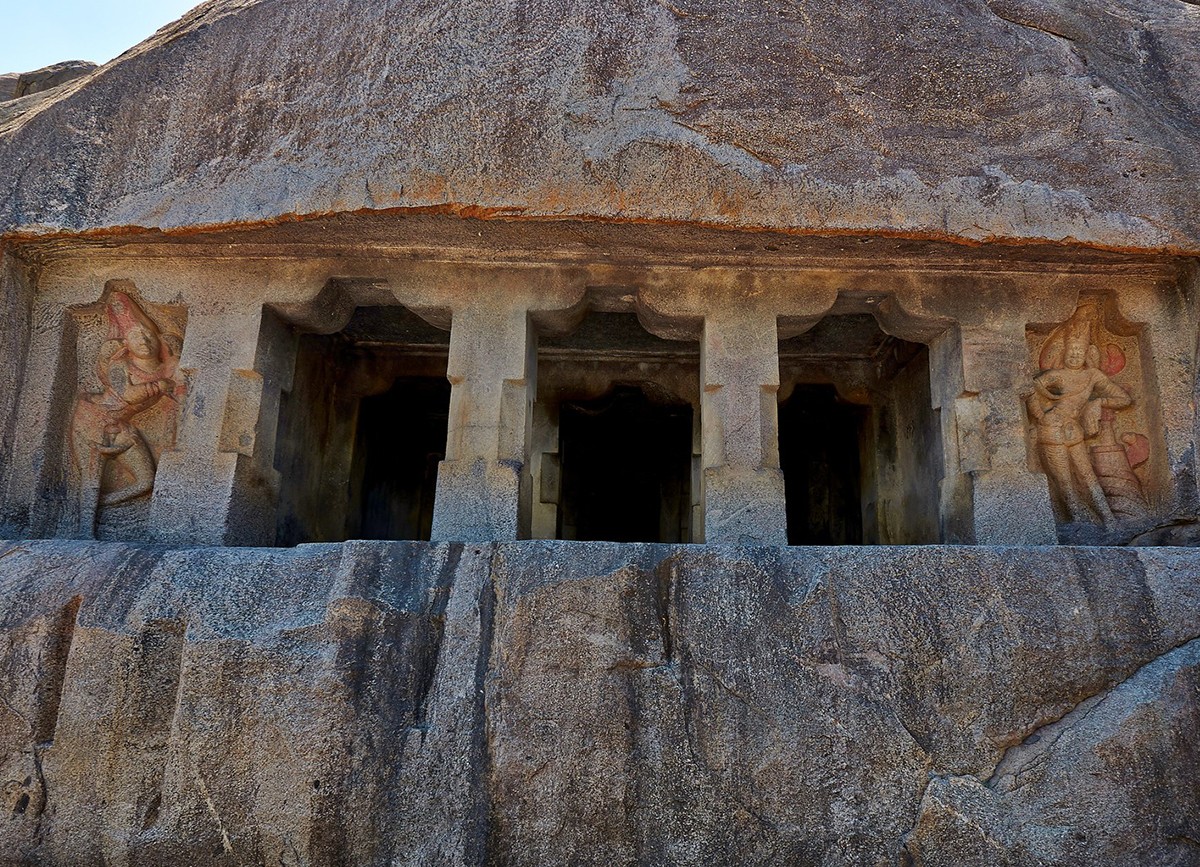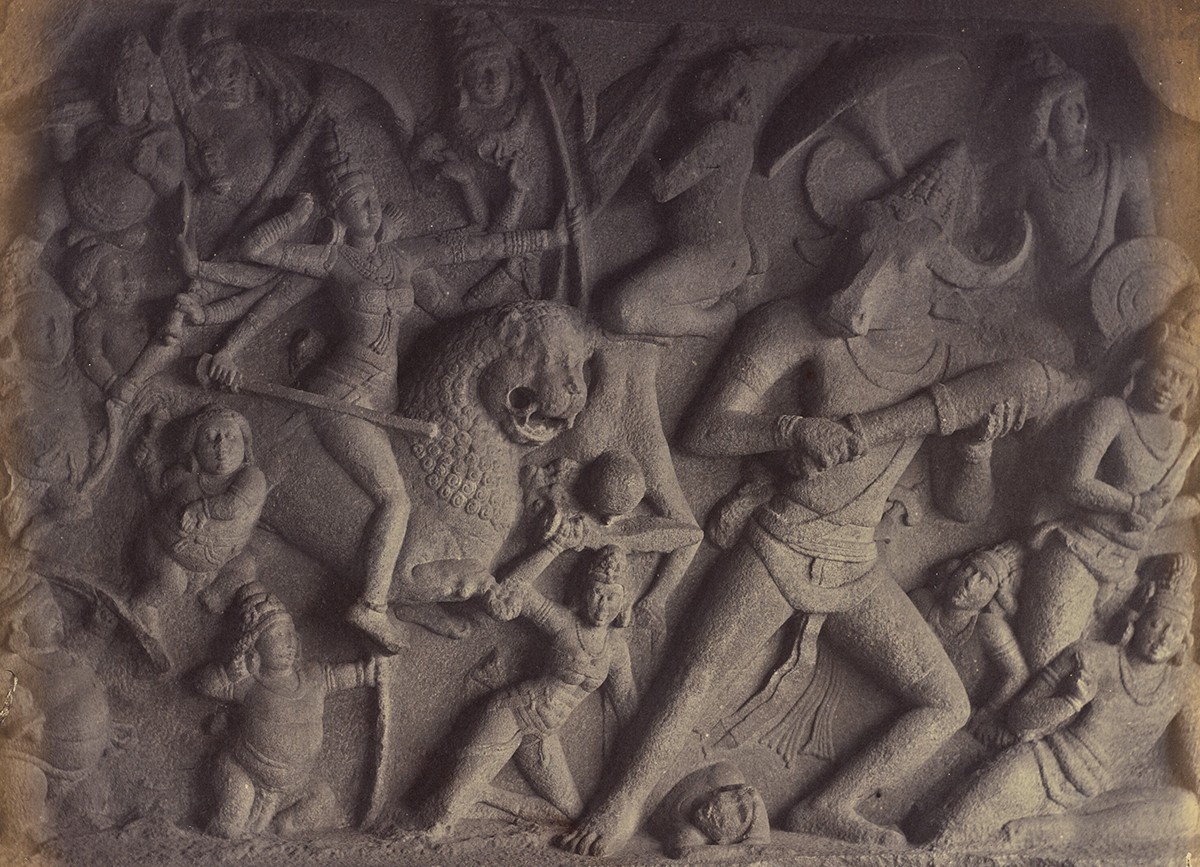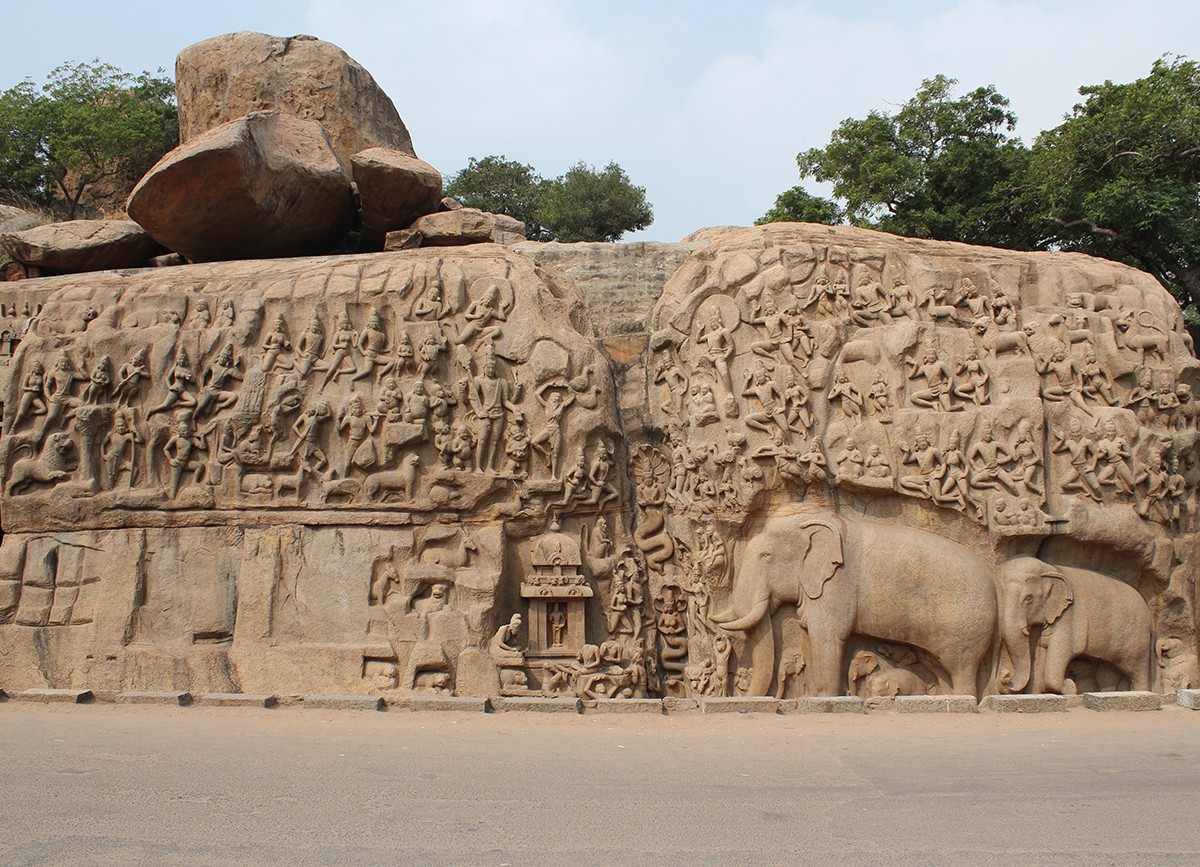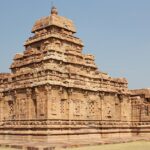The Pallavas Patronise the Arts
610 CE
In present-day Tamil Nadu and Andhra Pradesh, India, the Pallava dynasty under Mahendravarman I begins a period of extensive patronage for the arts. For the next three centuries, the Pallava court will commission Tamil and Sanskrit literature, as well as major works of architecture, sculpture, poetry, theatre and music. The traditions and styles that develop from this patronage will persist well beyond their reign.
While some early caves at Mamallapuram containing multiple shrines reflect a notable desire to bridge divisions across Vaishnava and Shaiva sects, successive waves of conquests and conflicts with Vaishnava monarchies result in a rejection of Vaishnavism over time. This leads to acts of effacement such as the ‘Shaiva curse’ inscriptions on Vishnu temples, which are soon converted to Shaivism, attesting to a subsequent culture of sectarian dominance and religious intolerance.
Mahendravarman I was an exponent of music, as noted by rock inscriptions in Kudumiyanmalai. During this era of early Pallava patronage, musical instruments such as the yazh, mridangam and murasu are introduced into performance arenas. The dynasty is also a great patron of religious and secular learning, establishing a number of Brahmin seminaries or ghatikas and mathas, which flourish alongside Buddhist and Jain centres of learning. The most prominent of these is the ghatika in Kanchipuram, well known across the subcontinent as a seat of learning.
Complementing this upsurge in scholarly advancement are a revival of literary traditions and innovations in poetry and verse. Outstanding examples from the period are the Sanskrit works Dasakumaracharitra and Kiratarjuniya by the court poet Dandin and the scholar Bharavi, respectively. The Pallava monarchs sometimes directly involve themselves in the arts and literature, particularly Mahendravarman. His contribution to Sanskrit drama includes the satires Bhagavatajjuka and Mattavilasa-Prahasanam, and his work as a painter can be seen in the early murals at Arivarkoil caves of Sittanavasal.
Bibliography
Harle, J. C. The Art and Architecture of the Indian Subcontinent. New Haven: Yale University Press, 1994.
Hirsh, Marilyn. “Mahendravarman I Pallava: Artist and Patron of Mamallapuram.” Artibus Asiae 48, nos. 1/2 (1987): 109–123, 125–130.
Huntington, Susan L., and John C. Huntington. The Art of Ancient India: Buddhist, Hindu, Jain. Tokyo: Weather Hill, 1985.
Lockwood, Michael. Pallava Art. Madras : Tambaram Research Associates, 2001.
Soundara Rajan, K. V. “Tamil Temple Architecture and Art.” Marg 33, no. 2 (1980): 5–41.
Dehejia, Vidya. Indian Art. New York: Phaidon, 2012.
Feedback 
This entry appears in
Art in South Asia
Visit Timeline
Associated Timeline Events
First Published: March 11, 2024
Last Updated: August 6, 2024




